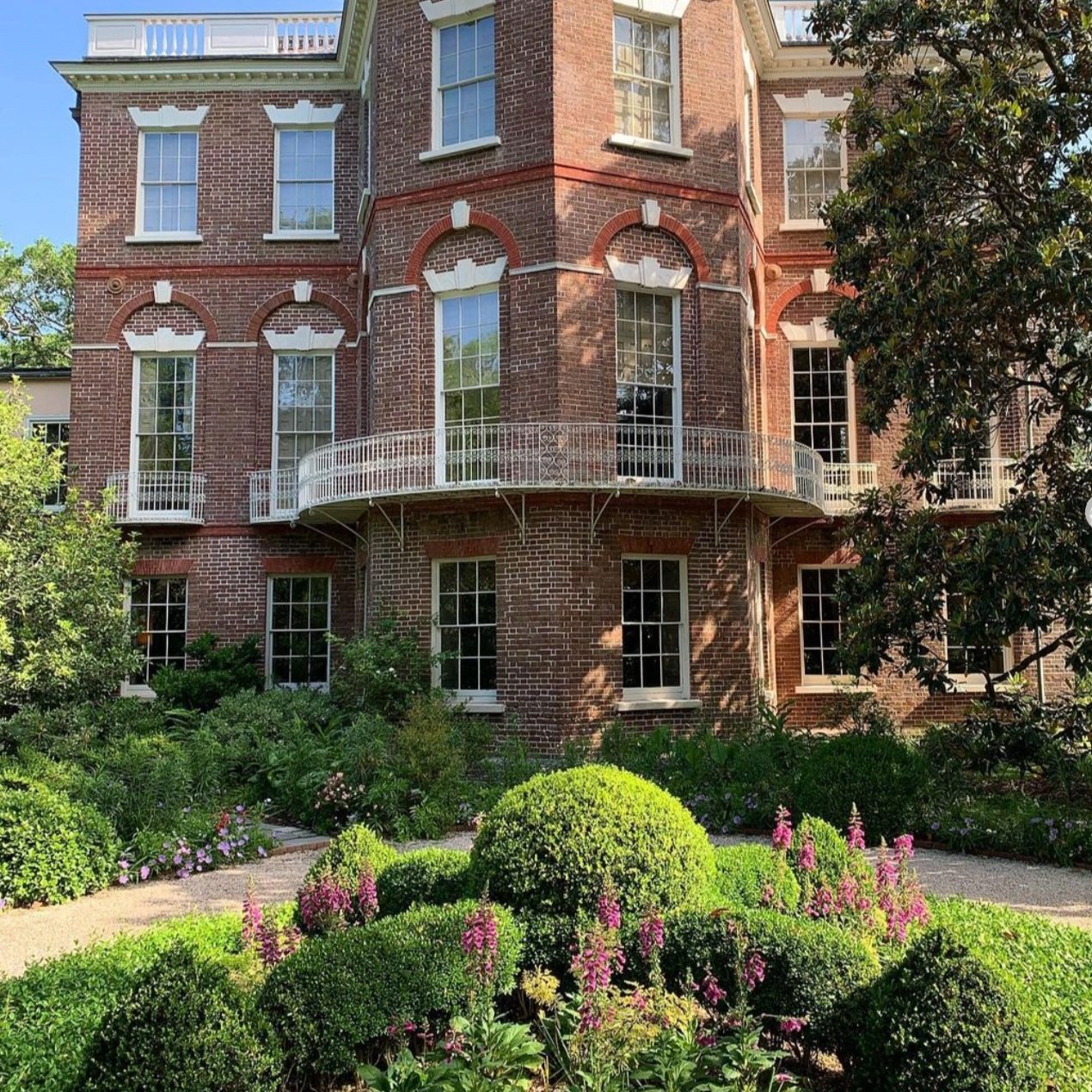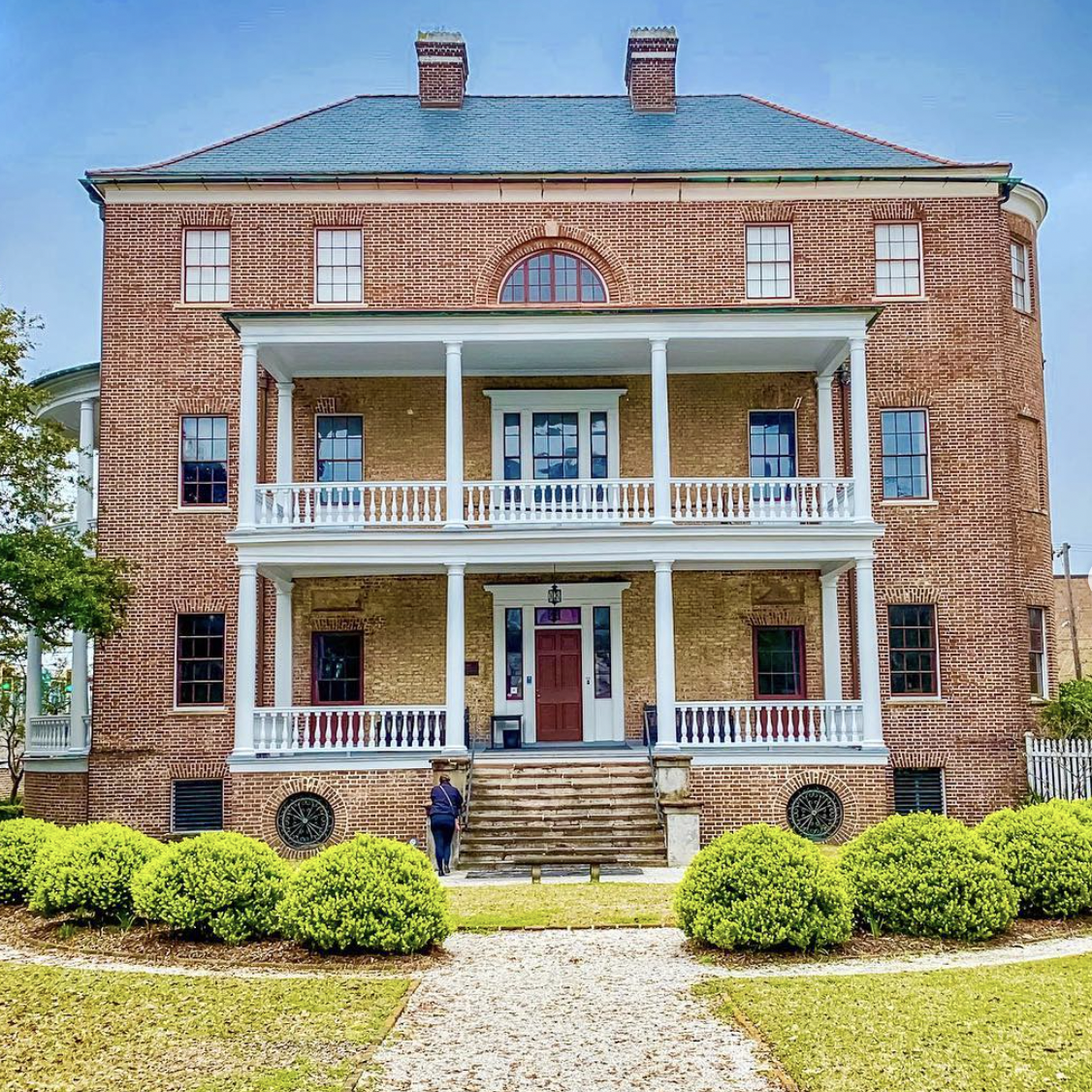Historic House Museums
photo by @historiccharlestonfoundation on Instagram
Aiken-Rhett House
The Aiken-Rhett house is known to be one of the most well-preserved homes in the US. It is unique to the city’s house museums in that it has been preserved as it was found, and many features are just as they were when the home was initially constructed in the 1820s. The Aikens, and later the Rhetts, were known for extravagant entertaining and for their trips to Europe to collect furniture and fine art for their lavish antebellum mansion. Much of the home was locked up for many years, with descendants only using a small portion of the house until it was sold to The Charleston Museum in 1975. As of that date, electricity had only been added to the ground level. The outbuildings, carriage house, and the kitchen house with enslaved quarters, lie in stark contrast to the once-sparkling home and exhibits the balance between the beauty of the home and the brutality of the slave economy that built the wealth the owners enjoyed. It is, in a way, an urban plantation. The house museum is operated by @historiccharlestonfoundation and offers an excellent interpretation. During October, they offer candlelight tours and tell stories of the haunted house for spooky season.
photo by @historiccharlestonfoundation on Instagram
Nathaniel Russell House
The Nathaniel Russell house has been restored to closely resemble its original 1808 appearance. Marvel at the three story "flying" spiral staircase and other architectural wonders, such as oval-shaped rooms. The restoration process in the house is ongoing; visitors have the opportunity to see and learn about the meticulous care, craft, and consideration that informs every detail. Currently, the Historic Charleston Foundation is uncovering the stories of the newly excavated Kitchen House. Initially this is where the enslaved toiled and lived. Eventually it was used as an office and gift shop, and now they're peeling back the layers to expose the historic resources the space still offers for interpretation.
photo by @passport.memories on Instagram
Joseph Manigault House
An architectural and historic gem! The proposed demolition of this house was the immediate cause for the founding of the Society for the Preservation of Old Dwellings (now, the Preservation Society). Some of the founders, primarily women, mortgaged their own homes to raise the money to save this house. The Preservation Society in Charleston is the first of its kind in America, and the society and this home inspired a national movement.
The architect was Joseph's brother, Gabriel Manigault, a protegé of Thomas Jefferson's. When this home was built, the Manigault family, was one of the wealthiest in America and that is certainly reflected in the splendor. The wealth was built with enslaved labor, and the Charleston Museum does an excellent job of providing the whole story to visitors.
photo by @historiccharlestonfoundation on Instagram
Heyward-Washington House
Thomas Heyward Jr. was a founding father and signer of the Declaration of Independence. This stately brick home was built in 1722 and was rented to his friend from the Continental Congress, President George Washington, during his visit to the city in May of 1791. The home is an excellent example of one of the themes of Walk & Talk Charleston's tours: adaptive reuse. The building has served as a home to the Heywards of course, and briefly the Grimkes, another wealthy planter family. Two of their daughters, Sarah and Angelina Grimke, became famous abolitionists. It has also been a bakery and now a house museum. The museum boasts a priceless and exceptionally beautiful piece of early American furniture, The Holmes Bookcase, the sight of which we think is worth the price of admission alone! ,We also love the views of St. Michael's from the rear garden.
Thomas Heyward's descendant is famed Charleston author, DuBose Heyward, who lived just down the block when he wrote the famous novel, then play and Gershwin Opera, Porgy and Bess.
Fun fact: For fire purposes, Charleston house museums are only open for tours on the first and second floors. In the 1970s, the third floor of this colonial house museum was turned into an apartment for a director of the Charleston Museum, complete with shag carpet!
photo by @middletonplacefoundation on Instagram
Edmonston-Alston House
The views though! The Edmonston Alston house, located on the High Battery, has remained in the Alston family since 1838. Many of the original items from the 19th century are featured in the home. You can visit this home as a shared ticket with Middleton Place Plantation. Visiting both gives one a broad insight on the lifestyle of one of the wealthiest planter families in South Carolina.
photo by @southernreverie on Instagram
Calhoun Mansion
The Williams (or Calhoun) mansion is the largest single residence in Charleston at over 24,000 square feet. It was built by Mr. Williams in 1878. John C. Calhoun passed in 1850 and the only connection is that Williams was married to John C. Calhoun's granddaughter. The expansive Italianate house is a private residence, but is open daily for public viewing. You might recognize it from the hit 1980s miniseries North and South.
Note: The museum is temporarily closed- check back soon!






